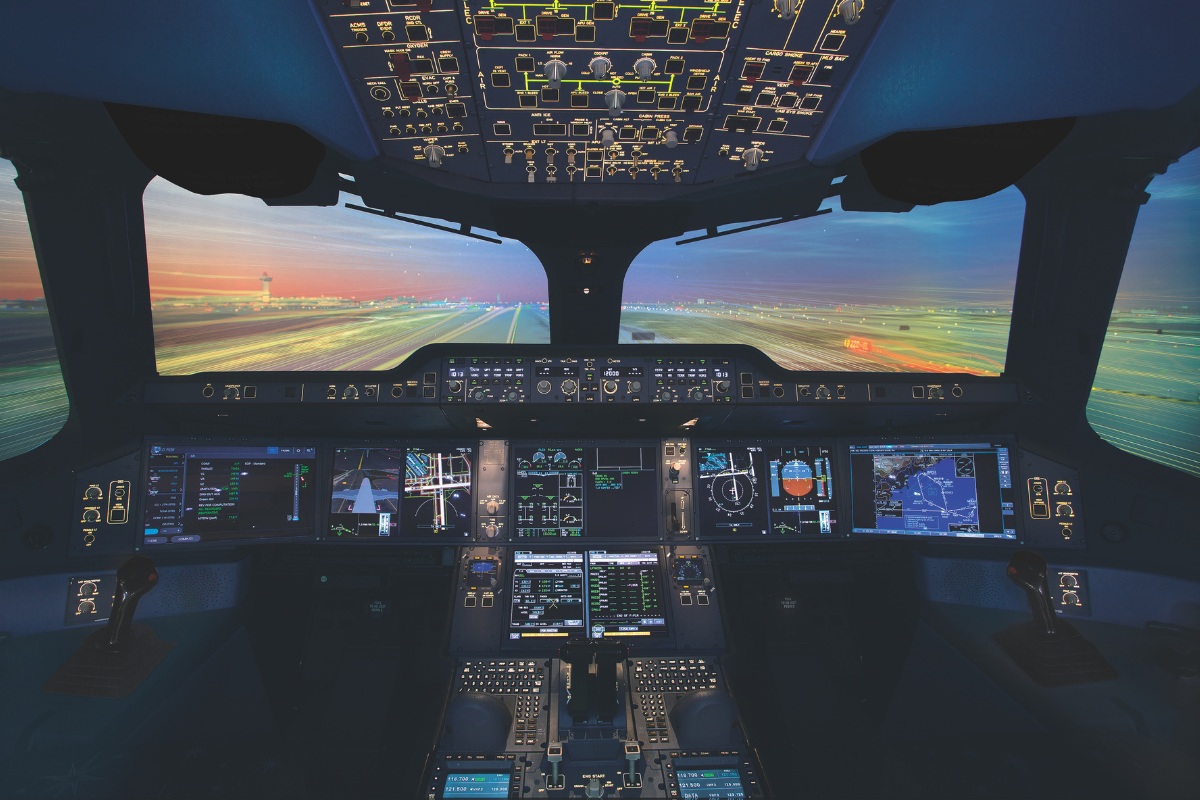Airbus’ radical plan to fly with one pilot
According to this article, the goal of European aircraft maker Airbus is to remove the necessity of having two pilots at the controls of commercial passenger aircraft at any given time by installing a potty-style toilet directly behind the captain’s seat on its flagship A350 long-haul aircraft.
The European aerospace behemoth’s toilet idea is a component of the continuing investigation into Extended Minimum Crew Operations, or eMCO, as the aviation industry has named it.
Single-pilot operations, where only one pilot controls a packed widebody aircraft during the cruise phase of flight, are referred to as extended minimum crew operations.
The hope is that eMCO will result in attractive cost savings for airlines because, on ultra-long-haul flights, there will no longer be a need to have three or four pilots operating on the same flight.
Under eMCO, one pilot would be left alone in the cockpit for up to three hours while the other pilot slept. Pilots alternate resting in a dedicated crew rest compartment while two are on the flight deck at any given time.
Although advanced work on eMCO projects is proceeding unabated and single-pilot operations could be a reality in less than five years, the plan has inevitably concerned unions and groups that represent pilots worldwide.
However, there are still a few significant obstacles to overcome. One of these is addressing the physiological demands of pilots, such as the need to use the restroom or cope with menstruation because they are human.
One of the tasks assigned to the European Air Safety Agency (EASA) is to research the safe implementation of eMCO, which includes addressing the possibility that pilots will have to use the can.
The pan-European organization took into consideration recommendations such as requiring pilots to have a high-protein, low-residue diet to reduce the likelihood that they would have to defecate and asking them to purposefully dehydrate themselves before beginning a lone shift at the aircraft controls.
The agency also considered other radical options, such as requiring pilots to use adult diapers or installing disposable pee collectors in cockpits.
Fortunately, all of these prospective remedies were rejected by the EASA study’s authors, who concluded that diapers, special diets, and urine collectors were neither acceptable nor viable.
Rather, EASA recommended that if a pilot had to wake up the second pilot to use the restroom urgently, the eMCO would be terminated. However, if the eMCO is terminated too soon, the pilots may become fatigued.
Airbus is now working on a plan to bring an open restroom to the flight deck to solve that problem.
“They’re going to get rid of that second jumpseat behind the Captain and put a toilet; think about that for a minute; that’s no pilot ops,” pilots at the Air Line Pilots Association (ALPA) board of directors meeting were recently warned.
“So when you have to relieve yourself, there’s no one at the controls. They are even proposing a comms panel at that toilet so that you can look forward to the control and instrumentation. If ATC calls, well, you can answer it while you’re resting on the can.”
As early as 2027, eMCO could be prepared to conduct tests on its A350 variant if Airbus gets its way. Single-pilot operations on cargo Airbus A320 aircraft may be implemented in the next five years.
The dispute against Airbus, Boeing, and the airline industry has intensified in recent months because of concerns that aircraft manufacturers are covertly attempting to be the first to introduce eMCO to the market. ALPA has joined forces with other pilot unions to resist eMCO.
“ALPA, along with global pilot unions, are united in opposition to this concept and have made it a priority to maintain at least two pilots on the flight deck to ensure the safety and security of all airline flight operations,” the union commented earlier this month.
“No one understands better than a pilot that when an issue arises in flight, it is the pilots who are responsible for achieving a safe outcome.”

